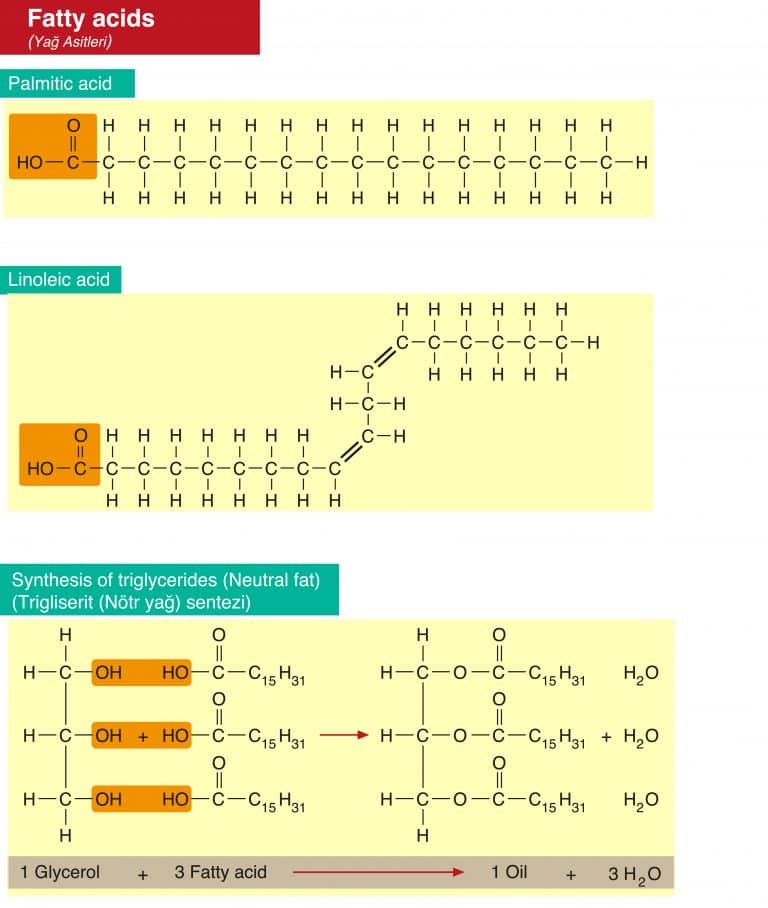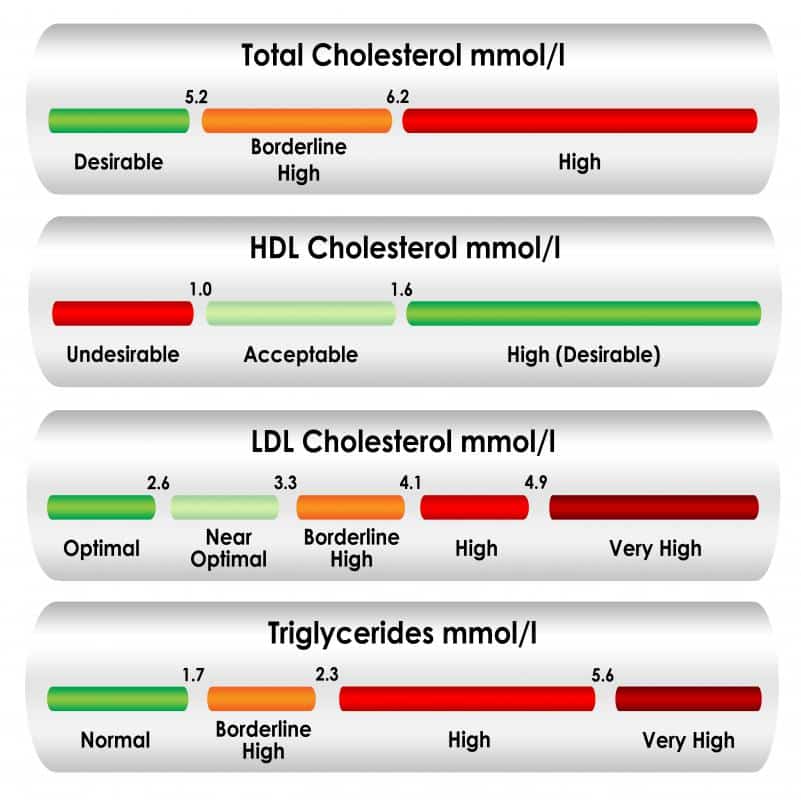Establish A Regular Meal Pattern
Insulin resistance is another factor that can contribute to high blood triglycerides.
After you eat a meal, the cells in your pancreas send a signal to release insulin into the bloodstream. Insulin is then responsible for transporting sugar to your cells to be used for energy.
If you have too much insulin in your blood, your body can become resistant to it, making it difficult for your body to use insulin effectively. This can lead to a buildup of both sugar and triglycerides in the blood.
Fortunately, setting a regular eating pattern can help prevent insulin resistance and high triglycerides. For instance, research shows that not eating breakfast can lead to decreased insulin sensitivity .
An American Heart Association statement suggested that irregular eating patterns seemed less likely to achieve healthy cardiometabolic levels. They recommended intentional eating at regular times .
However, the evidence is mixed when it comes to meal frequency.
A 2013 study demonstrated that eating three meals per day significantly decreased triglycerides compared with eating six meals per day (
36 ).
Regardless of how many meals youre eating daily, eating regular meals can improve insulin sensitivity and lower blood triglyceride levels.
Summary
While studies are mixed on how meal frequency affects blood triglyceride levels, research suggests that sticking to a regular meal pattern can decrease many heart disease risk factors and prevent insulin resistance.
Follow A Lower Carb Diet
Much like added sugar, extra calories from carbs in your diet are converted into triglycerides and stored in fat cells.
Not surprisingly, low carb diets have been linked to lower blood triglyceride levels .
A review of 12 randomized controlled trials found that people following reduced carb diets typically saw a reduction in triglyceride levels at 6, 12, and 24 months. Across these studies, triglyceride levels decreased the most 6 months after starting a reduced calorie diet .
A 2020 review compared low fat and low carb diets. Researchers found that 612 months after starting their relative diets, those on the low carb diet had greater decreases in triglyceride levels than those on a low fat diet .
Summary
Following a low carb diet can lead to a significant reduction in blood triglyceride levels, at least in the short term, when compared with a low fat diet.
Foods To Lower Triglycerides
If you have high triglycerides levels, apart from avoiding foods high in triglycerides, there’re also some foods that can help to lower your levels, which include:
1. Include More Omega3 Foods in Your Diet
Some fats are healthy and therefore, omega-3 fats can be used when you need to cut down the quantity of saturated and trans-fats from your food. These omega-3 fats are highly recommended for a healthy heart and particularly effective at lowering the levels of triglycerides. You can eat about two omega-3 fish servings like wild salmon, mackerel , herring, rainbow trout, sardines or maybe oysters every week. Additionally, let your doctor advise you on the habit of including fish oil supplements as part of your diet.
2. Go For Soy Protein
Soy protein is highly recommended for you if you realize that you have high levels of triglycerides. Soy protein lowers the level of triglycerides in your blood more than protein obtained from animal foods. A study published in 2004 in the Atherosclerosis Journal by Canadian researchers amongst 50 year old persons with high blood triglycerides responded positively after taking 25 grams quantity of soy protein for each 1,000 calories consumed.
3. Enjoy the Benefits of Nuts
Recommended Reading: Is Fish Oil Good For Cholesterol
Ways To Reduce Elevated Triglycerides
Eat The Right Foods For You

As weve seen, there are some broad dietary guidelines you can follow to help lower your triglyceride levels.
But our research shows that everyones blood fat responses to the foods they eat are personal, with more than 10 times the difference between some people.
ZOE runs the largest nutritional study of its kind, with over 15,000 participants so far. Based on our studies, weve developed a personalized nutrition program that takes your unique biology into account to help you improve your metabolic health.
Using the latest scientific techniques, the ZOE at-home test analyzes your triglyceride and blood sugar levels after eating, as well as the microbes in your gut.
Based on your results, the ZOE program then gives you advice on the best foods and food combinations for your body and your long-term health goals.
You can take a free quiz to find out more.
Don’t Miss: Does Seafood Give You High Cholesterol
Foods That Can Lower Triglycerides
Some studies suggest that essential fatty acids, such as omega-3 fatty acids, can help lower triglyceride levels.
This type of fat is found in:
Fish oil or omega-3 supplements may be a helpful addition to your diet. However, before taking supplements, you should speak with your healthcare provider.
Also make sure to eat plenty of vegetables, which help lower triglycerides in part because they don’t contain a lot of calories, sugars, or bad fats. Certain vegetables like Brussels sprouts, broccoli, and spinach contain an antioxidant called alpha-lipoic acid that may lower triglycerides.
Also, choose foods made with soy, which is a healthy source of protein. Some research suggests that regular soy protein consumption can lower triglycerides.
Adding foods rich in omega-3 fatty acids to your diet may help lower triglyceride levels. If possible, aim to eat wild-caught fatty fish at least twice a week. You should also try to get three to five servings of veggies daily, particularly non-starchy ones.
When To Get Your Tgs Tested
The American Heart Association recommends that everyone has a blood cholesterol test by the age of 20. Ideally, this test will include triglycerides. If you are overweight, obese, or considered at risk for heart disease, earlier testing is preferable. Harvard Health suggest getting tested at least every five years after the age of 20.
You might also want to get your labs done if you eat a lot of carbohydrates, have switched to a plant-based diet, lack energy, or have recently gained weight. Knowing your TG levels puts you in a far better position to make positive changes in your diet and lifestyle.
Editorial Sources and Fact-Checking
Read Also: What Is The Best Way To Lower Cholesterol
Cut Back On Sugar And Refined Carbs
Different carbohydrate-loaded foods also contain very different nutritional levels.
Dr. Nissen recommends scaling back or eliminating:
Dr. Nissen advises that increasing your fiber intake may lower triglyceride levels. If you have high triglyceride levels, theres a good chance you dont ingest close to the recommended 25 to 30 grams of fiber a day, he says.
Why Are High Triglycerides Bad
Very high levels of triglycerides are associated with liver and pancreas problems.
But studies show conflicting results on the role of high triglycerides and the risk of heart disease. Not all experts agree that triglycerides play a significant role in heart problems.
High triglycerides tend to show up along with other problems, like high blood pressure, diabetes, obesity, high levels of “bad” LDL cholesterol, and low levels of “good” HDL cholesterol. So itâs hard to know for sure which problems are caused by high triglycerides alone.
For instance, some people have a genetic condition that seems to cause high triglyceride levels. But they donât have an increased risk of heart disease. Still, there is some evidence that high triglycerides, on their own, increase the risk of disease. Other studies show that high triglycerides may only play a minor role when other heart disease risks are taken into account.
With ongoing studies, scientists hope to find out whether drugs that lower triglycerides also reduce the risks of heart disease.
Overall, it’s important to remember that improving diet and lifestyle will lower triglycerides and lower the overall risk of heart and blood vessel problems.
You May Like: What Kind Of Foods Are High In Cholesterol
The Problem With High Tgs
If your TG level is persistently above 175 mg/dL, this is known as hypertriglyceridemia. Such high levels increase your risk of diabetes, heart disease, and other health issues. In one study involving just under 400 people with an average age of 57, coronary artery disease was more pronounced in those with abnormal TG levels. 1
Elevated levels of triglycerides contribute to arteriosclerosis, where arteries become thicker and harder. Arteriosclerosis means that your arteries are less responsive, making it harder for your body to maintain normal blood pressure or respond safely to demands for increased circulation .
If your triglycerides are super high, this also increases you risk of acute pancreatic inflammation . High TGs might also prompt your doctor to look at your blood pressure, blood sugar, central adiposity , and levels of other blood lipids. This is because high triglycerides are one factor in metabolic syndrome and may indicate pre-diabetes or type 2 diabetes.
What You Can Do
Many of the steps you should take to lower triglycerides are the same ones you should take to protect your heart and health overall.
If you’re overweight, shed a few pounds. Get regular aerobic exercise . Limit the saturated fats in meat and dairy products. Watch your alcohol intake, even moderate drinking ramps up triglyceride levels. And diet? High-carb/low-fat eating will increase your triglycerides and lower your HDL.
If you’re taking a statin to lower your LDL, one side benefit may be reduced triglyceride levels. Depending on the dose, statins can lower triglycerides by 20%40%.
The omega-3 fats in fish and capsules are another triglyceride-lowering option. For a very high triglyceride level, your doctor can prescribe a high-dose omega-3 medication.
Image: udra/Getty Images
Read Also: How To Decrease Ldl Cholesterol
Not Watching Those Saturated And Trans Fats
We know that saturated fatscommonly found in packaged and processed foodspack on the pounds. But they can also increase the level of triglycerides in your blood in a big way, and it doesn’t take long to get there. One study published in the American Journal of Clinical Nutrition found that following a three-week diet high in trans fats resulted in much higher triglyceride levels than a diet high in unsaturated fat. Crean recommends swapping saturated fats out for mono and polyunsaturated fats, found in foods such as olive oil, avocado, and nuts.
How Often Should My Triglycerides Be Tested

If youâre a healthy adult, you should get a lipid profile every 4-6 years. Children should have it done at least once between the ages of 9 and 11, and one more time between 17 and 21. If youâre making changes to your diet or taking medication for high cholesterol or triglycerides, experts advise you to get a lipid profile afterward.
Show Sources
Also Check: How Much Cholesterol Does Chicken Have
Top Foods To Help Lower Triglyceride Levels
3 ).
Diet plays a major role in the production of triglycerides in your body. Certain foods may even help lower your blood levels.
Here are 8 top foods that may help lower triglyceride levels.
5 ).
Daily intakes of at least 25 grams of soy protein were most effective at lowering these fats in the blood .
Soybeans, edamame, tofu, and tempeh are excellent sources of isoflavones, a health-promoting compound linked to reduced triglycerides, weight management, and improved menopause symptoms .
Fermented soy products like natto and tempeh have a higher nutritional value than unfermented soy. When used to replace sources of animal protein, they have a potent triglyceride-lowering effect .
What Raises Triglyceride Levels
Related Articles
High triglyceride levels can increase your risk of heart disease, and a number of foods can cause them to rise. Triglycerides are fats stored in your blood they come from foods you eat and are also made by your body. Calories that you don’t need right away for energy are converted into triglycerides and stored for later use. If you regularly consume more calories than you use, you may develop high triglycerides. This is particularly true if the calories come from certain types of foods and beverages.
Recommended Reading: What Can High Cholesterol Mean
How Are Triglycerides Different From Cholesterol
Triglycerides and cholesterol are both fatty substances called lipids. But triglycerides are fats cholesterol is not. Cholesterol is a waxy, odorless substance made by the liver. It is used to build cell walls, helps the nervous system and plays an important role in digestion and hormone production.
Finding Out Your Triglycerides Levels
Triglycerides are measured with a simple blood test. Triglyceride levels should be measured when you have a cholesterol test as they can also contribute to your risk of developing heart disease, and other disease of the heart and blood vessels. The triglyceride test measures the triglycerides carried in chylomicrons and VLDL cholesterol. National guidelines in the UK no longer recommend a fasting blood test .
What should your triglyceride levels be?
HEART UK experts state that we should aim for a non-fasting triglyceride level below 2.3mmol/L.
If your doctor has asked you to fast for a test then your triglyceride level should be below 1.7mmol/L. This “fasting test” number is lower because only the triglycerides made by the liver and carried in the VLDL cholesterol will be measured not the triglycerides you get from food. As you have not eaten, there will be no chylomicrons present in your blood.
Also Check: What To Eat To Reduce Cholesterol
Should You Worry About High Triglycerides
These blood fats can be one of the signs of metabolic syndrome, which increases the risk for having a heart attack or stroke.
Until recently, triglycerides tended to get less attention when looking at cardiovascular risk compared to LDL and HDL cholesterol levels. There’s no question that extremely high levels spell trouble and can lead to acute pancreatitis. But what about treating lower levels of triglycerides? Recent evidence suggests you should work to reduce triglyceride levels of they are higher than normal, especially if you have heart disease or have other risk factors such as diabetes, high blood pressure or smoking.
Triglyceride levels |
|
*All values in milligrams per deciliter |
Eating Foods With A Low Gi
The glycemic index indicates how much a specific food is likely to increase your blood sugar levels.
For example, oats have a low GI, but white bread has a high GI and is more likely to lead to a big spike in your blood sugar.
Research suggests that eating a low glycemic diet is associated with lower triglycerides.
Recommended Reading: What Should Cholesterol Levels Be
How Do Triglycerides Get Into The Blood
When we eat foods containing triglycerides, such as meat, dairy products, cooking oils and fats, they are absorbed by our intestines and packaged into parcels of fats and protein called chylomicrons . These carry the triglycerides in the blood stream to our tissues to be used for energy straight away, or stored for later.
The body also makes its own supply of triglycerides in the liver. This form is carried in a different type of lipoprotein known as VLDL cholesterol.
For Those Diagnosed With High Triglycerides Its Important To Take Action To Lower Your Levels And Improve Your Heart Health

Triglyceride is just a fancy word for fat the fat in our bodies is stored in the form of triglycerides. Triglycerides are found in foods and manufactured in our bodies. Normal triglyceride levels are defined as less than 150 mg/dL 150 to 199 is considered borderline high 200 to 499 is high and 500 or higher is officially called very high. To me, anything over 150 is a red flag indicating my client needs to take immediate steps to get the situation under control.
High triglyceride levels make blood thicker and stickier, which means that it is more likely to form clots. Studies have shown that triglyceride levels are associated with increased risks of cardiovascular disease and stroke in both men and women alone or in combination with other risk factors . For example, in one groundbreaking study, high triglycerides alone increased the risk of cardiovascular disease by 14 percent in men, and by 37 percent in women. But when the test subjects also had low HDL cholesterol and other risk factors, high triglycerides increased the risk of disease by 32 percent in men and 76 percent in women.
Fortunately, triglycerides can often be easily controlled with several diet and lifestyle changes many of the same changes that I outlined in my High Blood Pressure and High Cholesterol sections.
What Factors Can Increase Triglycerides?
How Can You Lower Your Triglyceride Levels?
Learn more about Food Cures for high triglycerides.
Recommended Reading: What Foods Promote Hdl Cholesterol